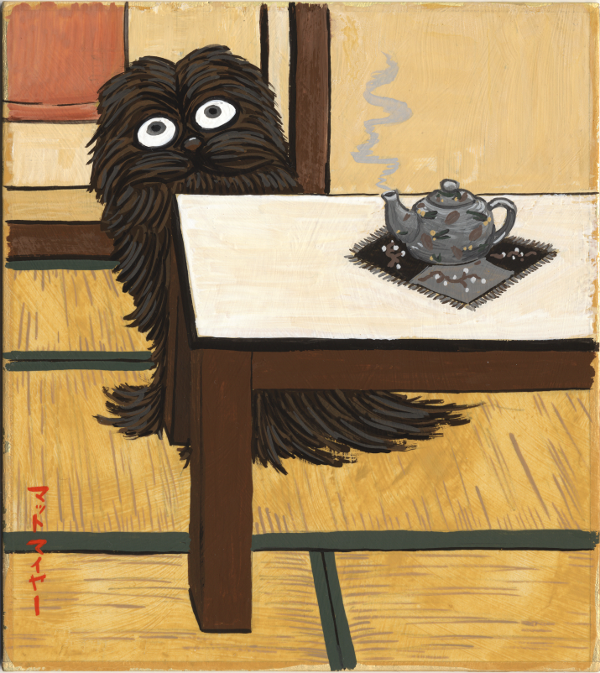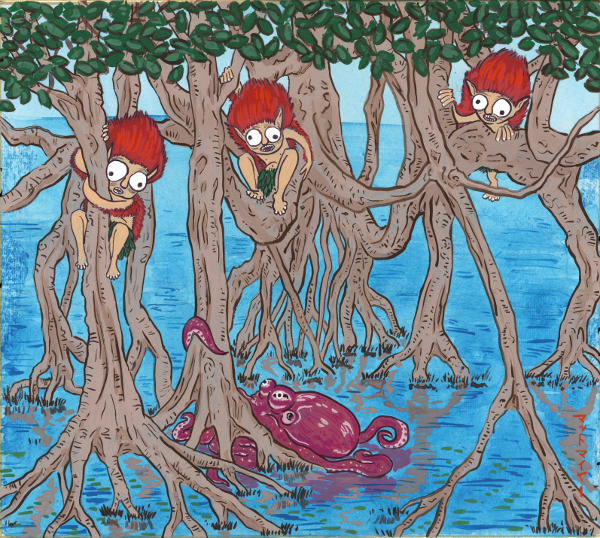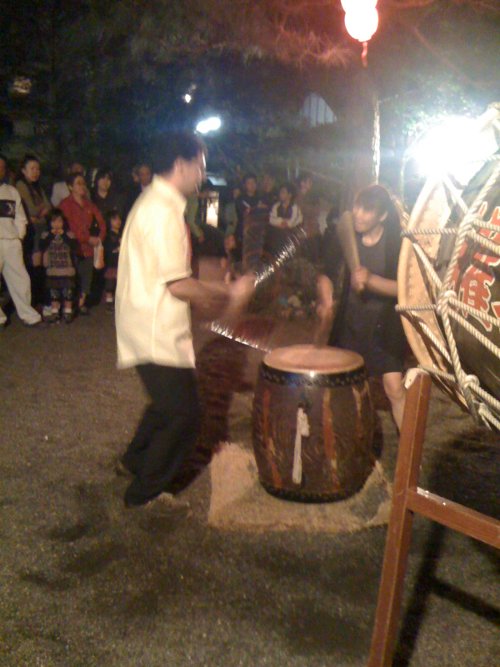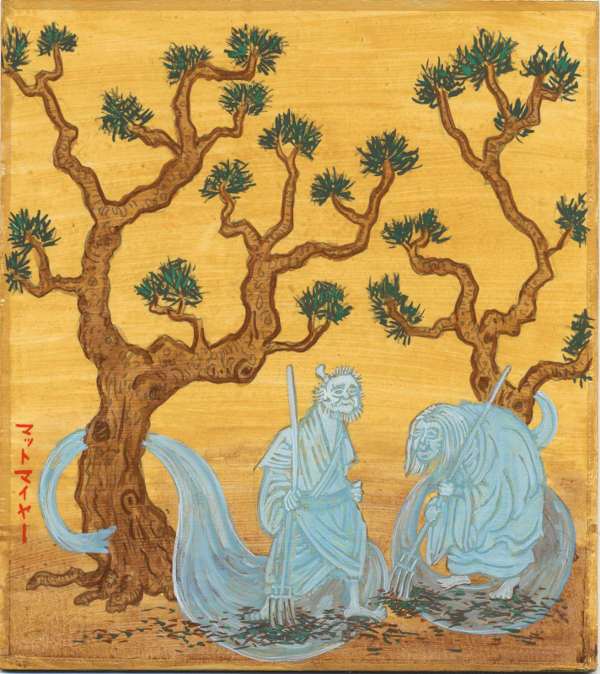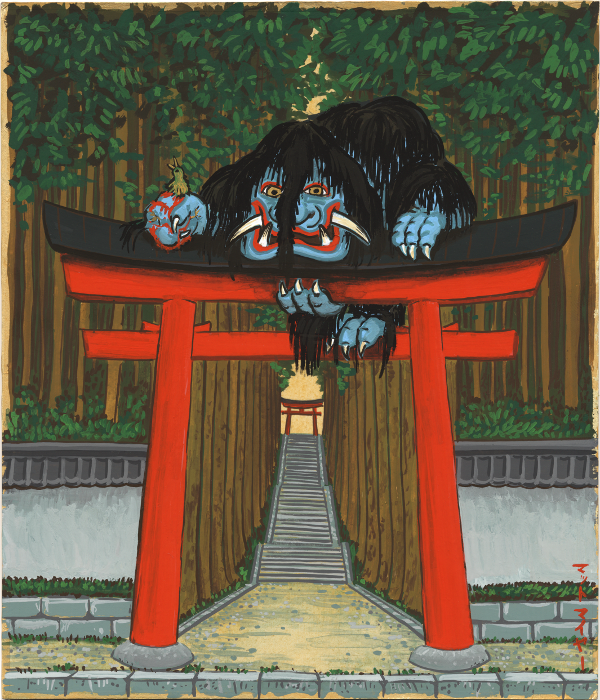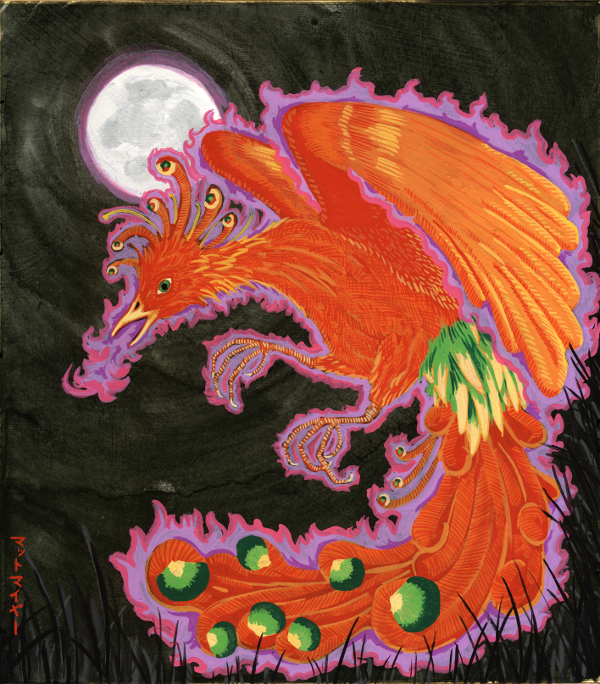Not all the yokai we will look at are common “species” of supernatural creature. Some of them are unique monsters, like the bogeyman or Bloody Mary. Today we’ll look at a unique yokai born from a specific legend at a specific temple.
Gagoze
Gagoze is a horrible-looking ghost who haunts the ancient temple Gango-ji in Nara prefecture. His story dates back to the Asuka period (550-710 CE). He is first depicted in illustration in Toriyama Sekien’s Gazu Hyakki Yakko, and he is said to take the appearance of a demon in monk’s garb.
His story says that during the time of Emperor Bidatsu, in old Owari province (now Nagoya in Aichi prefecture), lightning struck the ground near an farmer’s house. From the lightning emerged a thunder god in the form of a young boy, and the farmer ran outside with a stick to kill the boy. The boy pleaded with the farmer to spare his life, and promised that he would return the deed by giving the farmer and his family a young boy as strong as the thunder god. The farmer agreed, and allowed the thunder god to return to the sky.
Sure enough, the farmer’s wife soon bore a child, and the child was as strong as a thunder god! However, the child was born with a snake wrapped around his head, with the head and tail going down the back like a ponytail. When the boy turned 10, he had grown so strong and proud that he challenged a member of the imperial family to a contest of strength and won.
After this, the boy was apprenticed to Gango-ji temple. Shortly after that, the belltower boys began dying very strange deaths one-by-one, and rumors began to spread that an oni, or demon, was behind the deaths. The boy wanted to solve the mystery, so he said he would catch the oni. He waited all night by the belltower, and towards dawn finally the oni came. The boy grabbed the oni by the hair and dragged him around so hard that he ripped his entire scalp off, and the oni was able to escape. The boy followed the blood trail left by the oni all the way to its end, where he found the grave of a (former) very lazy and bad temple servant. The lazy servant’s ghost had become this terrible ghost-demon, and the boy had defeated it! The boy became famous and grew up to be a priest at the temple, and the oni’s scalp became one of the holy treasures of Gango-ji.
The story doesn’t really tell too much about the yokai itself, but it does at least explain who Gagoze was: a lazy priest-servant-turned-demon-ghost who liked to kill children! How is this not already a Japanese horror story?? I really love how the depiction of the spirit in the 3 different ukiyo-e paintings I was able to find all show him in this creepy, crawling position. These artists were centuries before modern horror stories, but they knew scary, and we can still see ghosts just like Gagoze crawling around in J-horror movies like Ringu and Ju-On today.

Gagoze
「今日の妖怪シリーズ」今日の妖怪は元興寺です。元興寺は見かけがひどい幽霊で、奈良にある元興寺という古いお寺に住み着いていたものです。彼にまつわる話は大変古く、飛鳥時代にまでさかのぼります。彼が始めて描かれたのは鳥山石燕による「百鬼夜行」で、そこでは元興寺は僧の姿をした鬼の姿で描かれています。
元興寺の伝説にはこのようにあります。敏達天皇の時代に尾張の国の農家の所に突然の落雷がありました。農夫がそこに行くと、そこには雷神の子がいたので、農夫はそれを殺そうとしました。雷神の子は農夫に命乞いをし、もし命を助けてくれたら雷神のように力の強い子を授けると言いました。農夫はそれに応じ、雷神の子を空に返しました。
その後、農夫の妻は子供を授かりました。その子の頭には蛇が巻きつき、頭と尾を後頭部にポニーテイルのように垂らしているという異様な姿でしたが、その子供が10歳になったときに行われた力試しコンテストでは、なんと優勝してしまったというまさしく雷神のような力を持った子でありました。
後にその子供は元興寺の童子となりました。ある時、寺の童子達が変死する事件が続き、鬼に殺されたとの噂が立っていました。農夫の子はその謎を突き止めたくなり、自分がその鬼をつかまえる!と言いました。彼は毎晩鬼の来るのを待ち、待ち続けた末にようやく鬼がやってきました。そして鬼が現われるや否や、その髪の毛を引きずりまわしまし、夜明けごろには鬼の毛はすっかりと抜け落ちてしまいました。朝になってから抜け落ちた毛と血のあとを追っていくと、血痕はとある墓につながっていました。その墓は、以前元興寺で奉公していた無精な下男のもので、その下男が霊鬼となって現われていたのでした。この時に抜き取った頭髪は、現在元興寺の宝物になっているそうです。
今回のお話はそれほど妖怪の要素はありませんが、元興寺が何者かについて書いてみましょう:無精な下男が霊鬼となって現われたものであり、子供たちを殺していた。これは日本のホラーストーリーではありませんか??
元興寺を描くために、3種類の異なった浮世絵を見ましたが、それらは全て興味深かったです。

元興寺(がごぜ)

